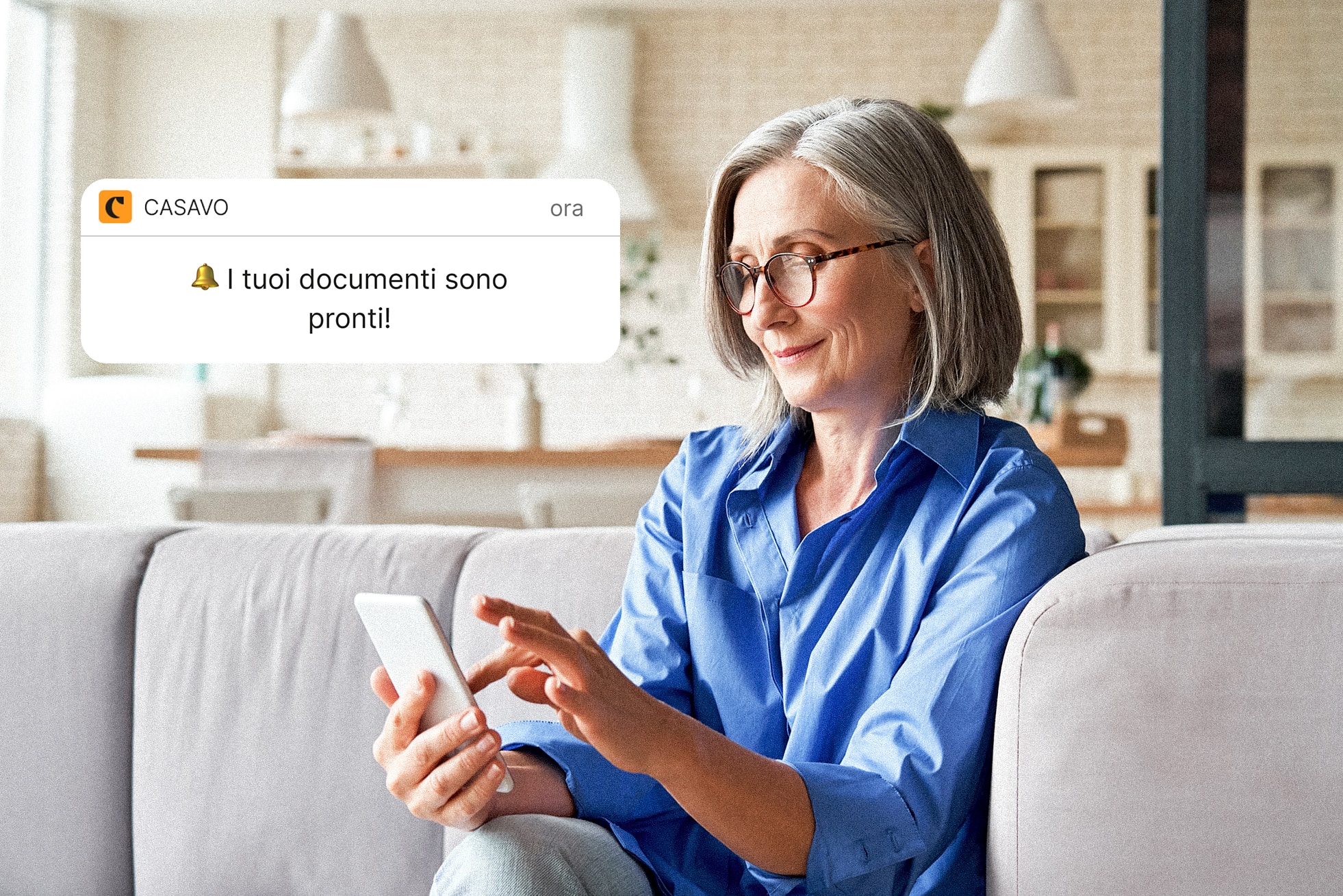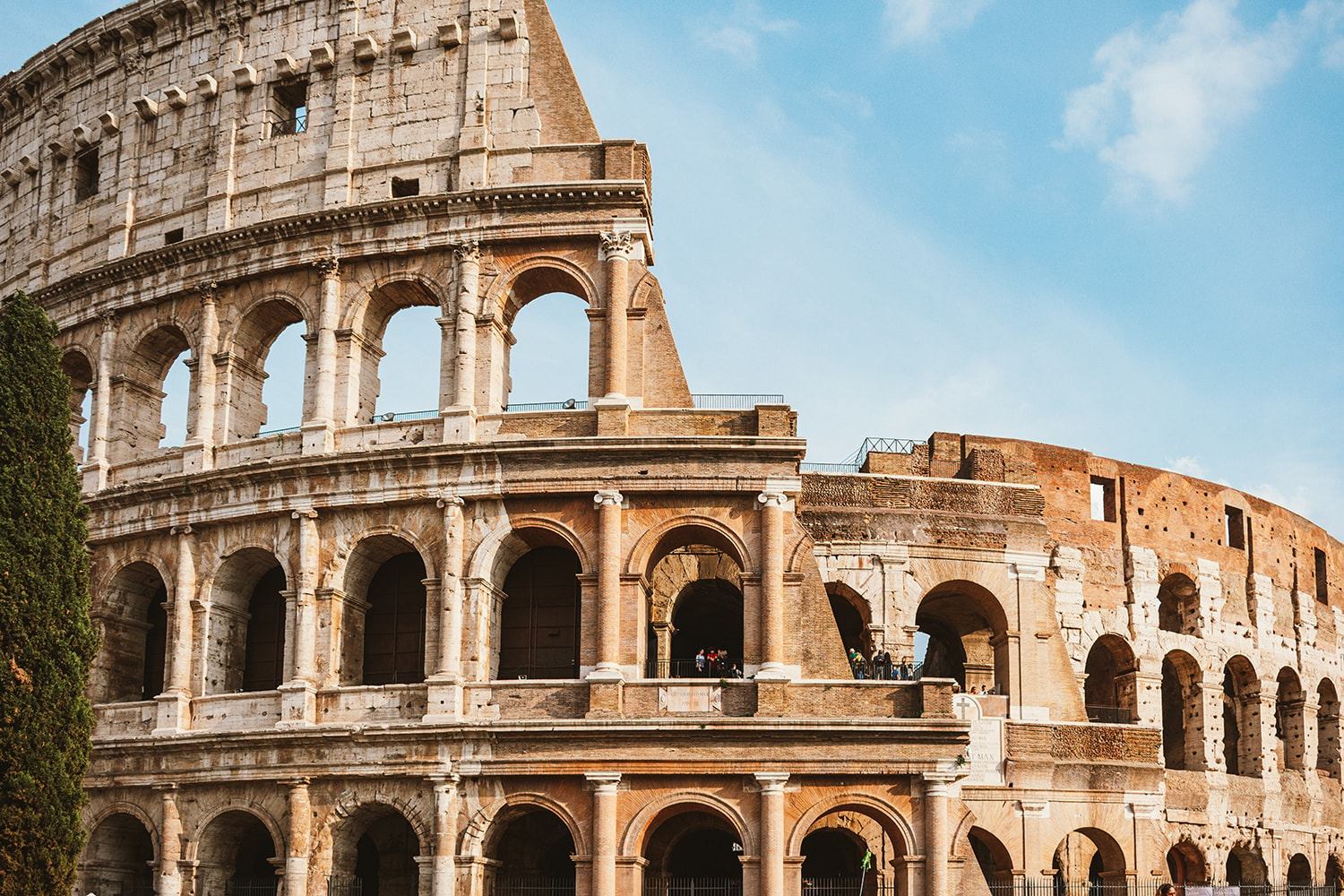Index
Buying a bare ownership in Rome can represent an interesting opportunity for both investors and those who wish to retain the right to live in their own home.
Bare ownership allows you to purchase a home without the immediate right to live in it, reserving the seller, often an elderly person, the right of usufruct for the rest of their life.
This type of real estate transaction offers significant economic advantages, such as a purchase price reduced compared to the full market value. This model has become particularly popular in some areas of the capital, such as Tomba di Nerone and Balduina Alta, where demand for real estate is growing.
In this article, we will examine the various aspects of bare ownership in Rome, analyzing the benefits, legal considerations, and investment opportunities it offers.
[cta-casavo title="Do you want to know the value of your home?" text="It's free and instant."]
Definition of bare ownership
Bare ownership is a legal term that indicates the ownership of a property without the right of usufruct. In practice, whoever buys the bare ownership becomes the owner of the house, but the usufruct remains in favor of the seller or another person for their entire lifetime.
This right allows the usufructuary to continue living in the property or to derive economic benefit from it, for example by renting it out. At the end of the usufruct, the bare owner acquires full ownership and can freely dispose of the property.
Bare ownership in Rome is particularly attractive for investors, as it allows them to purchase properties at prices lower than their market value. For example, you can find apartments for sale with three bedrooms, a kitchen, and a living room, ideal for large families or those looking for large living spaces.
Difference Between Bare Ownership and Usufruct
The main difference between bare ownership and usufruct lies in the rights and responsibilities of each party. Bare ownership represents the legal ownership of the property without the right to immediate use.
In other words, the bare owner is the owner of the property, but cannot enjoy it until the usufruct ends.
Usufruct, on the other hand, is the right to use and enjoy the benefits of a property owned by another person for a specified period, often for the entire life of the usufructuary. The usufructuary can live in the house, rent it out and collect rent, but must also keep the property in good condition and bear the ordinary maintenance costs.
Only upon the death of the usufructuary or upon expiration of the established term does the bare owner acquire full ownership of the property and can dispose of it freely.
Advantages of the Sale of Bare Ownership
Advantages for the Seller
Selling the bare ownership offers several advantages for the seller, often an elderly person.
First of all, the seller can obtain a sum of immediate cash, which can be used to cover medical expenses, improve the quality of life, or help family members.
Furthermore, the seller retains the right of usufruct, allowing them to continue to live in their home without having to pay rent. This ensures stability and housing security.
Selling the bare ownership can also reduce the tax burden, since the seller will no longer be the full owner of the property.
Finally, by transferring the bare ownership, the seller can avoid inheritance complications, simplifying the succession process for the heirs. In summary, selling bare ownership in Rome can represent a practical and advantageous solution for those who want immediate liquidity without giving up their home.
Advantages for the Buyer
Buying bare ownership has numerous advantages for the buyer.
The main benefit is the reduced purchase price compared to the full market value. This discount is due to the fact that the right of usufruct remains with the seller for as long as he is alive.
Furthermore, the buyer benefits from the revaluation of the property over time: at the end of the usufruct, the property will be completely his, often with a significantly increased value.
This makes bare ownership an interesting long-term investment, especially in emerging areas of Rome such as Tomba di Nerone or Balduina Alta, where the neighborhoods are experiencing a period of revaluation.
Furthermore, since he is not the usufructuary, the buyer has no direct responsibilities for the ordinary maintenance of the house, which remain the responsibility of the usufructuary.
Finally, purchasing bare ownership offers the possibility of planning for the future, guaranteeing a property for oneself or for one's heirs without the urgencies and pressures of immediate use.
Legal Considerations
Tax Aspects of Bare Ownership
The tax aspects of bare ownership are particularly relevant for both the seller and the buyer.
For the seller, the transfer of bare ownership may result in capital gains tax, calculated as the difference between the sale price and the original purchase value of the house. However, if the seller has owned the property for more than five years, this capital gain is exempt from taxation.
For the buyer, the purchase of bare ownership entails the payment of registration, mortgage, and land registry taxes, calculated on the value of the bare ownership itself, which is lower than the full value of the property.
Furthermore, during the usufruct period, the usufructuary is responsible for local taxes such as IMU and TASI. At the end of the usufruct, the buyer becomes the full owner and must pay all taxes related to the property.
Knowing these tax aspects is essential to making an informed choice.
Required Documentation
To buy or sell bare ownership, it is essential to prepare a series of legal documents. First, you need the property's certificate of ownership, which confirms who the legal owner is. Furthermore, a copy of the sales contract is required, which must be drawn up by a notary and signed by both parties.
The seller must also provide a declaration of building and land registry compliance, which certifies that the property complies with urban planning and land registry regulations.
It is important to have the energy performance certificate (APE), which indicates the property's energy efficiency.
Finally, to complete the process, additional documents may be required, such as the certificate of habitability and any building permits or concessions.
This documentation ensures that the transaction takes place legally and transparently, protecting the interests of both parties involved.
Sell and buy a house with Casavo, we'll take care of all the paperwork Required!

Bare ownership in Rome
Most requested areas
Buying a bare ownership in Rome can be particularly advantageous in some of the most sought-after areas of the city.
Neighborhoods such as the Historic Center, Trastevere, and Prati are highly sought-after for their beauty, history, and accessibility to major attractions. These areas offer high potential for real estate appreciation over time, making them ideal for long-term investments.
Other emerging areas such as Testaccio, Pigneto, and San Lorenzo are growing in popularity thanks to their vibrant cultural life and urban regeneration.
Residential neighborhoods such as Monteverde and Appio Latino are also highly sought-after, offering a good balance between tranquility and amenities.
Choosing to invest in a bare ownership in these areas allows you to obtain a prestigious property at a price
[cta-casavo title="Overwhelmed by documents?" text="Don't worry, Casavo handles the paperwork for you."]
Examples of successful transactions
Many bare ownership transactions in Rome have demonstrated the value of this type of investment.
For example, on Via Marco Fulvio Nobiliore, an apartment sold as bare ownership was purchased at a price significantly below full market value, allowing the buyer to obtain a valuable property in a central area.
Another example is on Via Francesco Gai, where a second-floor apartment with an eat-in kitchen and three bedrooms was sold as bare ownership. This transaction allowed the seller, an elderly gentleman, to retain the right of usufruct and continue to live in his property, while the buyer was able to make a long-term investment in a rapidly growing neighborhood.
In Via Andrea Sacchi, another bare ownership transaction involved an apartment with an entrance hall, living room, open-plan kitchen, and terrace, ideal for those seeking a spacious and bright property in a well-served area.

How to Evaluate an Investment in Bare Ownership
Price Evaluation
Evaluating the price of a bare ownership is a crucial aspect of making a good investment.
The price of a bare ownership depends on various factors. factors, including the age of the usufructuary, the estimated duration of the usufruct, the location of the property and the conditions of the real estate market. Generally, the younger the usufructuary, the greater the discount applied to the selling price of the bare ownership.
It is important to carry out an accurate valuation with the help of an expert, which takes into account the current value of the property and future market projections.
For example, in areas such as Tomba di Nerone or Cassia, the revaluation of the property over time can be significant, making the purchase of the bare ownership a very advantageous option.
In this context, investors must consider both the growth potential of the property and the associated risks, such as any extraordinary maintenance costs or the possibility of depreciation.
Importance of Location
Location is A determining factor in the valuation of a bare ownership. Properties located in well-served neighborhoods, close to transportation, schools, and public services, tend to maintain or increase their value over time.
For example, Via Marco Fulvio Nobiliore is considered a strategic area for bare ownership investments, thanks to its proximity to the city center and the presence of numerous services. Likewise, the Tomba di Nerone area on the Cassia offers excellent accessibility to public transport, making it attractive for those seeking a quiet yet well-connected residential environment.
Choosing the right location not only improves the property's appreciation potential, but also ensures greater ease in managing the usufruct.
For example, an apartment in a central area with an eat-in kitchen, spacious bedrooms, and nearby services will be more attractive to both the buyer and the usufructuary.
Future Considerations
When purchasing a bare ownership, it is important to consider not only the current value of the property, but also its future prospects. Real estate market trends, neighborhood developments, and urban planning are all factors that can influence the value of bare ownership over time.
For example, neighborhoods undergoing urban regeneration, such as Testaccio or San Lorenzo, can offer significant growth opportunities.
Furthermore, areas where new infrastructure developments are planned, such as the expansion of subway lines or the creation of new parks, can see an increase in real estate value.
Considering demographic trends, access to essential services, and the quality of the surrounding environment is essential to making an informed choice and maximizing long-term return on investment.

Procedure for Buying a Bare Ownership
Preliminary Steps
Buying a bare ownership requires careful planning and a series of fundamental steps.
The first step is in searching for the right property.In this context, it is advisable to contact real estate professionals or consult specialized portals that offer the sale of bare ownership. These platforms often offer detailed information on houses, apartments, and other properties available in well-served neighborhoods, such as Tomba di Nerone, Balduina Alta, or Cassia.
Once you've identified the property you're interested in, it's essential to carry out an accurate valuation, making use of the experience of an appraiser or real estate agent.
This phase includes analyzing the price, which must adequately reflect the reduction due to bare ownership compared to the full value of the property.
The location is also a determining factor: a property located on Via Marco Fulvio Nobiliore or in other central areas of Rome can represent a strategic investment, thanks to its proximity to transport, services, and parks.
Stipula del Contratto
The second crucial step in purchasing a bare The signing of the contract is the first step in the process of ownership. This must be drawn up by a notary, who ensures the legal compliance of the transaction. The rights and obligations of the buyer and the usufructuary must be clearly defined in the contract.
It is essential that the conditions of the usufruct are specified, including the duration and any limitations on the use of the property.
When stipulating the contract, the contract must provide for registration with the Revenue Agency and transcription in the land registers, thus guaranteeing the full legitimacy of the transaction.
This legal process is essential to protect both parties and ensure that the transaction complies with all current regulations.
Post-Sale Management
After the purchase, the management of the bare ownership requires constant attention and monitoring. The buyer must maintain a collaborative relationship with the usufructuary, ensuring that the latter respects the conditions of use of the property and maintains its condition. At this stage, communication is key to resolving any issues related to maintenance or changes in the condition of the property.
In addition to day-to-day management, it is important to monitor local real estate market trends. The buyer may want to evaluate the option of selling the bare ownership or converting it to full ownership when the usufruct ends, thus maximizing the value of the investment.
Areas such as Tomba di Nerone or Via Francesco Gai could see an increase in property value over time, making the bare ownership investment strategy particularly profitable.
Conclusion
Investing in bare ownership in Rome is a strategic choice for those seeking opportunities in the real estate market. Thanks to the possibility of purchasing a property at a price lower than its full value, the buyer can benefit from a long-term investment that combines immediate financial benefits with the potential for future appreciation.
However, to get the most out of an investment in bare ownership, it is essential to adopt a careful and thoughtful approach. From the preliminary valuation to post-sale management, every stage of the process requires attention to detail and a good knowledge of the dynamics of the real estate market.
Investing in bare ownership is not just a question of economic calculations, but also of strategic vision and understanding of the context in which the property is located.
With proper planning and the support of experts, bare ownership can prove to be a safe and profitable investment over time.
[cta-casavo title="Not sure where to start?" text="We do, request a free consultation."]
